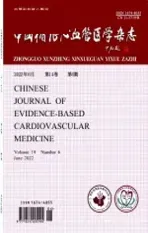线粒体自噬在心肌缺血再灌注损伤中的研究进展
2017-08-15王凯夏中元
王凯,夏中元
线粒体自噬在心肌缺血再灌注损伤中的研究进展
王凯1,夏中元1
自噬是指细胞吞噬自身的蛋白质或细胞器并降解,以实现细胞本身代谢的需要和某些细胞器的更新。线粒体自噬是指细胞通过自噬机制来清除受损或不需要的线粒体。线粒体是真核生物进行能量代谢的重要场所,并且参与细胞分化、细胞信息传递和细胞凋亡等过程。近年来研究表明,自噬特别是线粒体自噬被认为在缺血性心脏疾病中起着重要作用[1],线粒体自噬具有保护因心肌缺血引起心肌细胞死亡的作用[2]。线粒体自噬的调控机制错综复杂,但经过多年研究发现,其调节主要与PTEN诱导假定激酶1(PINK1)/Parkin、BNIP3/NIX、FUNDC1等信号通路明显相关,本文就线粒体自噬在心肌缺血再灌注损伤中的研究进展进行综述,并讨论线粒体自噬的调控机制。
1 自噬与心肌缺血再灌注损伤
自噬发生在细胞内并具有重要的生理功能,如降解异常折叠的蛋白质、参与氧化应激和缺血再灌注等过程[3-5]。研究表明,在心肌缺血过程中,自噬水平明显升高[6],通过形成自噬小体,与溶酶体结合形成自噬溶酶体进而降解自噬小体的内容物,以实现能量代谢的需要和某些细胞器的更新。在心肌缺血再灌注阶段雷帕霉素靶体蛋白(mTOR)和AMP依赖的蛋白激酶(AMPK)在自噬中起重要作用,AMPK促进自噬过程而mTOR抑制自噬过程,使用AMPK激动剂和mTOR抑制剂能通过诱导自噬来保护缺血后的心肌细胞[7],肝激酶B1(LKB1)、钙调蛋白依赖性蛋白激酶β(CaMKKβ)、转化生长因子β活化的激酶1(TAK1)是AMPK的上游激酶[8,9],在AMP或ADP水平升高或胞浆中钙离子水平升高等情况下激活AMPK,活化AMPK负性调节mTOR,可直接或经mTOR间接磷酸化ULK1激活自噬[10,11]。此外有研究表明,心肌缺血再灌注过程中会激活过度的自噬,导致细胞功能障碍和细胞死亡,抑制心肌缺血再灌注过程中过度的自噬会减轻心肌细胞坏死[12]。
2 线粒体自噬与心肌缺血再灌注损伤
心肌细胞中富含线粒体,线粒体与心肌缺血再灌注过程密切相关,缺血再灌注可诱导线粒体自噬的发生,主要涉及到Parkin和BNIP3的变化。H9c2心肌细胞经缺氧复氧处理后,线粒体内PINK1和Parkin水平下降,自噬水平下降[13],Parkin的缺乏会加剧心脏损伤和减少心肌梗死存活率[14]。在H9c2细胞中,WDR26(G_β类似蛋白)能够增加线粒体膜电位从而增加Parkin转移到线粒体,在Parkin 转移到线粒体后,增加线粒体蛋白的泛素化,促进自噬[15]。细胞缺氧时BNIP3表达升高[16],在心肌缺血再灌注损伤过程中,BNIP3可引起线粒体通透性改变,诱导自噬小体的聚集及溶酶体的消耗,促进线粒体自噬的发生[17]。
3 线粒体自噬的调控通路
线粒体自噬与心肌缺血再灌注损伤密切相关,线粒体自噬的调控有多条信号同路的参与,目前研究热点主要集中在PINK1/Parkin、BNIP3/NIX、FUNDC1通路。
3.1 PINK1/Parkin 真核细胞内线粒体自噬调控机制是目前线粒体自噬领域的研究热点。研究发现细胞能量和氧代谢紊乱、线粒体膜电位变化、细胞内活性氧增多、Ca2+稳态失衡等,引起线粒体损伤或功能障碍的因素均可以诱导线粒体自噬的发生。目前研究较深入的调节线粒体自噬的途径是PINK1/Parkin通路,且该信号通路依赖泛素的参与[18]。
3.1.1 PINK1/Parkin介导线粒体自噬过程 PINK1是一种丝氨酸/苏氨酸蛋白激酶,主要存在于线粒体外膜。Parkin是一种E3泛素酶,主要存在于细胞浆中。线粒体功能正常时,PINK1通过线粒体膜上的转位酶转移到线粒体内膜降解。当线粒体受损时,PINK1转运受阻,聚集于线粒体外膜。此时PINK1会改变泛素分子,改变的泛素随后会招募Parkin到线粒体,然后E3泛素链接酶被激活,通过泛素化底物以激活线粒体自噬[19]。Lazarou等[20]认为聚集在线粒体外膜的PINK1通过招募NDP52(核点蛋白质52)与视神经病变诱导蛋白(optineurin)可直接激活线粒体自噬过程,而NDP52与optineurin通过招募自噬因子ULK1、DFCP 1和WIPI1来标记需要降解的线粒体。
当泛素出现在线粒体外膜时将会招募受体蛋白,如NBR1和P62。这些受体蛋白含有UBA(泛素相关)域和LIR(LC3相互作用域)序列,可同时结合配体到泛素标记线粒体和自噬小体,使受损线粒体被自噬泡和自噬小体降解[20]。
3.1.2 PINK1/Parkin介导线粒体自噬过程的调节 在PINK1/Parkin介导的线粒体自噬过程中,抗凋亡蛋白Bcl-2相关分子、促凋亡蛋白BH3相关分子调节Parkin向线粒体转移;泛素特异性蛋白酶(USP)能够调节泛素化过程;P62、组蛋白脱乙酰基辅酶6(HDAC6)、optineurin和NDP52是作为线粒体自噬受体调节线粒体自噬过程。
抗凋亡蛋白Bcl-2相关分子(Bcl-XL,Mcl-1和Bcl-W)以Beclin依赖的方式抑制招募Parkin到线粒体膜[19]。Bcl-XL、Mcl-1和Bcl-W与Parkin直接相互作用,阻止Parkin和PINK1的相互作用,从而阻止线粒体蛋白的泛素化。促凋亡BH3蛋白Puma、Noxa、 Bim和Bad能促进Parkin转移到线粒体,通过减少Parkin和上述的Bcl-2相关分子的相互作用,达到减少招募Parkin到线粒体的作用[19]。Parkin介导的线粒体外膜蛋白(OMM)泛素化,可以招募泛素和LC3结合接头蛋白P62,并诱导线粒体自噬[21]。招募和活化Parkin依赖PINK1的磷酸化,同时也磷酸化单个泛素和泛素链[22]。
线粒体膜蛋白去泛素化、USP30和USP15能负性调节Parkin介导的线粒体自噬[23,24]。 具有E3泛素连接酶功能的Parkin和具有去泛素化酶功能的USP30能够平衡调节线粒体自噬过程。线粒体损伤能够刺激Parkin将lys6,lys11和lys63泛素链连接到线粒体上,而USP30能够通过其去泛素化酶功能移除线粒体上的lys6-和lys11-泛素链,利用质谱技术,发现重组USP30会优先移除完整线粒体上的lys-6和lys11-泛素链,抵消Parkin调节的泛素链形成过程[23]。然而USP8只能选择性的去泛素化[25]。PARK2(Parkin)主要以K6偶联泛素结合物的形式存在。PARK2与去泛素化酶USP8相互作用,优先清除K6连接物,从而调节PARK2的活性和功能,并且K6偶联泛素结合物和USP8介导的去泛素化可以调节PARK2[26]。然而,其中一个去泛素化复合体(Ubp3-Bre5)可抑制线粒体自噬,却能促进其他形式的自噬[27]。
Lee等[28]认为,P62和组蛋白脱乙酰基辅酶6(HDAC6)可能是线粒体自噬的重要受体。根据Parkin介导的泛素化,P62和HDAC6结合泛素使得受损的线粒体沿着微管到核周位点降解。Narendra等[29]认为,P62不仅对于线粒体自噬具有重要作用,且对于线粒体的聚集是必不可少的。在Parkin介导的线粒体自噬过程中,CHDH(胆碱脱氢酶)可以招募P62和LC3到受损的线粒体,并与P62相互作用刺激线粒体自噬[30]。Lazaou等[20]最近证实,optineurin和NDP52对于线粒体自噬是必需的。海拉细胞被分别敲除五种不同的自噬受体,包括optineurin、NDP52、P62、TAX1BP和NBR1,接着引入不同的受体研究他们在线粒体自噬中的作用。optineurin和NDP52单个敲除并没有影响线粒体自噬,然而当二者都被敲除的时候将会阻止线粒体的降解,表明optineurin和NDP52是最基本的受体。
3.2 BNIP3/NIX BNIP3和NIX(BNIP3L)是一种同源蛋白,均定位于线粒体,均含有LIR基序,可与LIR结合作为自噬受体诱导线粒体自噬的发生。但是,在线粒体自噬过程中BNIP3和NIX的表现略有不同,BNIP3在缺氧期间调节线粒体自噬,而NIX调节红细胞谱系成熟时线粒体的自噬过程[31]。当细胞处于恶劣的环境下时BNIP3可诱导过度线粒体自噬,导致细胞死亡,而NIX并不能诱导过度的线粒体自噬[32]。
BNIP3是HIF1α(缺氧诱导因子1α)的靶基因,受缺氧诱导但同时也受RB1-E2F1,TP53,FOXO3,NFKB/NF-κB和其他肿瘤相关的转录因子的转录调控,线粒体外膜的BNIP3 LIR和自噬体膜上经处理过的LC3相互作用促进线粒体的自噬[33]。通过与LIR相邻的丝氨酸残基磷酸化来调节BNIP3介导的线粒体自噬的活性[34]。DCT-1是秀丽隐杆线虫中与哺乳动物BNIP3和BNIP3L/NIX同源的物质,能在压力应激下介导线粒体自噬促进长寿。DCT-1作用于PINK-1-PDR-1/Parkin途径的下游,并且其在自噬诱导条件下泛素化以介导清除损伤的线粒体[35]。BNIP3 LIR的17和24位丝氨酸残基磷酸化能特异性的促进LC3B和GATE-16的结合,17位丝氨酸磷酸化是LC3B和GATE-16结合的先决条件,而24位丝氨酸的磷酸化进一步增加对LC3B和GATE-16的亲和力。
与BNIP3类似,NIX(BNIP3L)含有SWxxL LIR基序,其LIR的活性受丝氨酸磷酸化调节[36]。NIX的功能是作为一个配体蛋白和招募LC3或者γ-氨基丁酸受体相关蛋白,通过它的N末端的LIR(LC3相互作用域)来引起线粒体的损伤。Zhang等[37]研究发现,正常情况下BNIP3在红细胞系统中并不表达,但在BNIP3L(NIX)敲除的小鼠网织红细胞成熟过程中,BNIP3有效促进网织红细胞内线粒体的清除,表明BNIP3和NIX存在功能冗余。
3.3 FUNDC1 定位于线粒体外膜的FUNDC1含有三个跨膜结构域和一个N末端的LIR基序,用于结合LC3和GABARAP蛋白(γ-氨基丁酸受体相关蛋白)[38]。在正常情况下FUNDC1能稳定存在于线粒体外膜而不介导线粒体自噬的发生。当线粒体受损或功能障碍时,通过抑制SRC激酶,使FUNDC1 LIR的18位酪氨酸和酪蛋白激酶2(CK2)13位丝氨酸去磷酸化激活FUNDC1介导的线粒体自噬[38,39]。FUNDC1的18位酪氨酸磷酸化是线粒体自噬的分子开关[40]。
在缺氧或者线粒体解偶联时,PGAM5使FUNDC1的CK2第13位磷酸化的丝氨酸去磷酸化以激活LC3并结合[39]。FUNDC1-LC3相互作用受到致癌的SRC1激酶活化的调节,使得FUNDC1 LIR在18位磷酸化[41]。Bcl-XL拮抗PGAM5介导的FUNDC1的去磷酸化,从而防止LC3结合[42]。表明在FUNDC1系统,抗凋亡信号拮抗线粒体自噬反应[36]。此外,FUNDC1通过DNM1L/DRP1(线粒体动力相关蛋白-1)和OPA1(视神经萎缩症蛋白)协调线粒体的分裂或融合以及线粒体自噬。线粒体受到应激时,将会导致FUNDC1-OPA1复合物的分解,同时提高DNM1L招募到线粒体,参与线粒体自噬过程[43]。
4 其他
Hirota等[44]认为,在哺乳动物细胞中,线粒体自噬主要是通过一条可替代途径发生,这条途径需要丝裂原活化蛋白激酶MAPK1和MAPK14信号通路而并非PINK1/Parkin,但是目前对于该信号通路在线粒体自噬中的研究较少,仅有研究表明MAPK14与酵母中的Hog1同源,并且Hog1参与线粒体自噬过程。所以MAPK1和MAPK14在线粒体自噬过程中的具体机制有待进一步研究。
5 结语
线粒体自噬与心肌缺血再灌注损伤的发生和发展密切相关,同时线粒体自噬受多种因素的调控,在正常情况下细胞通过自噬来清除受损或功能障碍的线粒体。但是,当线粒体自噬过程受阻或过度的自噬时会导致各种疾病的发生和发展。因此,探究心肌缺血再灌注损伤过程中线粒体自噬及其调控机制有助于掌握线粒体自噬与心肌缺血再灌注损伤及各种疾病的关系,为临床治疗提供新的思路。
[1] Sciarretta S,Zhai P,Shao D,et al. Rheb is a Critical Regulator of Autophagy During Myocardial Ischemia Pathophysiological Implications in Obesity and Metabolic Syndrome[J]. CIRCULATION,2012,125(9):1134-66.
[2] Moyzis AG,Sadoshima J,Gustafsson AB. Mending a broken heart: the role of mitophagy in cardioprotection[J]. Am J Physiol Heart Circ Physiol,2015,308(3):H183-92.
[3] Bartolome A,Guillen C,Benito M. Autophagy plays a protective role in endoplasmic reticulum stress-mediated pancreatic beta cell death[J].Autophagy,2012,8(12):1757-68.
[4] Quan W,Hur KY,Lim Y,et al. Autophagy deficiency in beta cells leads to compromised unfolded protein response and progression from obesity to diabetes in mice[J]. Diabetologia,2012,55(2):392-403.
[5] Zeng M,Wei X,Wu Z,et al. Simulated ischemia/reperfusion-induced p65-Beclin 1-dependent autophagic cell death in human umbilical vein endothelial cells[J]. Sci Rep,2016,6:37448.
[6] Gui L,Liu B,Lv G. Hypoxia induces autophagy in cardiomyocytes via a hypoxia-inducible factor 1-dependent mechanism[J]. Exp Ther Med,2016,11(6):2233-9.
[7] Huang L,Dai K,Chen M,et al. The AMPK Agonist PT1 and mTOR Inhibitor 3HOI-BA-01 Protect Cardiomyocytes After Ischemia Through Induction of Autophagy[J]. J Cardiovasc Pharmacol Ther,2016,21(1):70-81.
[8] Dalle Pezze P,Ruf S,Sonntag AG,et al. A systems study reveals concurrent activation of AMPK and mTOR by amino acids[J]. Nat Commun,2016,7(13254).
[9] Hindupur SK,Gonzalez A,Hall MN. The Opposing Actions of Target of Rapamycin and AMP-Activated Protein Kinase in Cell Growth Control[J]. Cold Spring Harb Perspect Biol,2015,7(8):a019141.
[10] Kim J,Kundu M,Viollet B,et al. AMPK and mTOR regulate autophagy through direct phosphorylation of Ulk1[J]. Nat Cell Biol,2011,13(2):132-41.
[11] Shang L,Wang X. AMPK and mTOR coordinate the regulation of Ulk1 and mammalian autophagy initiation[J]. Autophagy,2011,7(8):924-6.
[12] Liu X,Zhang C,Zhang C,et al. Heat shock protein 70 inhibits cardiomyocyte necroptosis through repressing autophagy in myocardial ischemia/reperfusion injury[J]. In Vitro Cell Dev Biol Anim,2016,52(6):690-8.
[13] Sun L,Zhao M,Yang Y,et al. Acetylcholine Attenuates Hypoxia/Reoxygenation Injury by Inducing Mitophagy Through PINK1/Parkin Signal Pathway in H9c2 Cells[J]. J Cell Physiol,2016,231(5):1171-81.
[14] Kubli DA,Zhang X,Lee Y,et al. Parkin protein deficiency exacerbates cardiac injury and reduces survival following myocardial infarction[J].J Biol Chem,2013,288(2):915-26.
[15] Feng Y,Zhao J,Hou H,et al. WDR26 promotes mitophagy of cardiomyocytes induced by hypoxia through Parkin translocation[J].Acta Biochim Biophys Sin (Shanghai),2016,48(12):1075-84.
[16] Wang X,Ma S,Qi G. Effect of hypoxia-inducible factor 1-alpha on hypoxia/reoxygenation-induced apoptosis in primary neonatal rat cardiomyocytes[J]. Biochem Biophys Res Commun,2012,417(4):1227-34.
[17] Ma X,Godar RJ,Liu H,et al. Enhancing lysosome biogenesis attenuates BNIP3-induced cardiomyocyte death[J]. Autophagy,2012,8(3):297-309.
[18] Reeve AK,Simcox EM,Duchen MR,et al. Mitochondrial Degradation,Autophagy and Neurodegenerative Disease[M]. Springer International Publishing,2016,255-78.
[19] Hollville E,Carroll RG,Cullen SP,et al. Bcl-2 family proteins participate in mitochondrial quality control by regulating Parkin/PINK1-dependent mitophagy[J]. Mol Cell,2014,55(3):451-66.
[20] Lazarou M,Sliter DA,Kane LA,et al. The ubiquitin kinase PINK1 recruits autophagy receptors to induce mitophagy[J]. Nature,2015,524(7565):309-14.
[21] Rakovic A,Shurkewitsch K,Seibler P,et al. Phosphatase and tensin homolog (PTEN)-induced putative kinase 1 (PINK1)-dependent ubiquitination of endogenous Parkin attenuates mitophagy: study in human primary fibroblasts and induced pluripotent stem cellderived neurons[J]. J Biol Chem,2013,288(4):2223-37.
[22] Okatsu K,Koyano F,Kimura M,et al. Phosphorylated ubiquitin chain is the genuine Parkin receptor[J]. J Cell Biol,2015,209(1):111-28.
[23] Cunningham CN,Baughman JM,Phu L,et al. USP30 and parkin homeostatically regulate atypical ubiquitin chains on mitochondria[J].Nat Cell Biol,2015,17(2):160-9.
[24] Cornelissen T,Haddad D,Wauters F,et al. The deubiquitinase USP15 antagonizes Parkin-mediated mitochondrial ubiquitination and mitophagy[J]. Hum Mol Genet,2014,23(19):5227-42.
[25] Durcan TM,Tang MY,Perusse JR,et al. USP8 regulates mitophagy by removing K6-linked ubiquitin conjugates from parkin[J]. EMBO J,2014,33(21):2473-91.
[26] Durcan TM,Fon EA. USP8 and PARK2/parkin-mediated mitophagy[J]. Autophagy,2015,11(2):428-9.
[27] Muller M,Kotter P,Behrendt C,et al. Synthetic quantitative array technology identifies the Ubp3-Bre5 deubiquitinase complex as a negative regulator of mitophagy[J]. Cell Rep,2015,10(7):1215-25.
[28] Lee JY,Nagano Y,Taylor JP,et al. Disease-causing mutations in parkin impair mitochondrial ubiquitination,aggregation,and HDAC6-dependent mitophagy[J]. J Cell Biol,2010,189(4):671-9.
[29] Narendra D,Kane LA,Hauser DN,et al. p62/SQSTM1 is required for Parkin-induced mitochondrial clustering but not mitophagy; VDAC1 is dispensable for both[J]. Autophagy,2010,6(8):1090-106.
[30] Park S,Choi SG,Yoo SM,et al. Choline dehydrogenase interacts with SQSTM1/p62 to recruit LC3 and stimulate mitophagy[J]. Autophagy,2014,10(11):1906-20.
[31] Ney PA. Mitochondrial autophagy: Origins,significance,and role of BNIP3 and NIX[J]. Biochim Biophys Acta,2015,1853(10 Pt B):2775-83.
[32] Shi RY,Zhu SH,Li V,et al. BNIP3 interacting with LC3 triggers excessive mitophagy in delayed neuronal death in stroke[J]. CNS Neurosci Ther,2014,20(12):1045-55.
[33] Chourasia AH,Macleod KF. Tumor suppressor functions of BNIP3 and mitophagy[J]. Autophagy,2015,11(10):1937-8.
[34] Zhu Y,Massen S,Terenzio M,et al. Modulation of serines 17 and 24 in the LC3-interacting region of Bnip3 determines pro-survival mitophagy versus apoptosis[J]. J Biol Chem,2013,288(2):1099-113.
[35] Palikaras K,Lionaki E,Tavernarakis N. Coupling mitogenesis and mitophagy for longevity[J]. Autophagy,2015,11(8):1428-30.
[36] Hamacher-Brady A,Brady NR. Mitophagy programs: mechanisms and physiological implications of mitochondrial targeting by autophagy[J].Cell Mol Life Sci,2016,73(4):775-95.
[37] Zhang J,Loyd MR,Randall MS,et al. A short linear motif in BNIP3L(NIX) mediates mitochondrial clearance in reticulocytes[J].Autophagy, 2012,8(9):1325-32.
[38] Liu L,Feng D,Chen G,et al. Mitochondrial outer-membrane protein FUNDC1 mediates hypoxia-induced mitophagy in mammalian cells[J]. Nat Cell Biol,2012,14(2):177-85.
[39] Chen G,Han Z,Feng D,et al. A regulatory signaling loop comprising the PGAM5 phosphatase and CK2 controls receptor-mediated mitophagy[J]. Mol Cell,2014,54(3):362-77.
[40] Kuang Y,Ma K,Zhou C,et al. Structural basis for the phosphorylation of FUNDC1 LIR as a molecular switch of mitophagy[J].Autophagy,2016:1-11.
[41] Wu W,Tian W,Hu Z,et al. ULK1 translocates to mitochondria and phosphorylates FUNDC1 to regulate mitophagy[J]. EMBO Rep,2014,15(5):566-75.
[42] Wu H,Xue D,Chen G,et al. The BCL2L1 and PGAM5 axis defines hypoxia-induced receptor-mediated mitophagy[J]. Autophagy,2014,10(10):1712-25.
[43] Chen M,Chen Z,Wang Y,et al. Mitophagy receptor FUNDC1 regulates mitochondrial dynamics and mitophagy[J]. Autophagy,2016,12(4):689-702.
[44] Hirota Y,Yamashita S,Kurihara Y,et al. Mitophagy is primarily due to alternative autophagy and requires the MAPK1 and MAPK14 signaling pathways[J]. Autophagy,2015,11(2):332-43.
R542.2
A
1674-4055(2017)10-1266-03
1430060 武汉,武汉大学人民医院麻醉科
夏中元,E-mail:xiazhongyuan2005@aliyun.com
10.3969/j.issn.1674-4055.2017.10.36
本文编辑:阮燕萍
